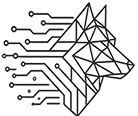The challenge
This global logistics provider runs a complex software ecosystem powering everything from fleet tracking to customs documentation. With multiple deployments per quarter, User Acceptance Testing (UAT) was a growing bottleneck — slowing rollouts, delaying customer features, and overburdening QA teams.
Legacy UAT relied heavily on manually crafted test cases and email-based approvals, with limited audit trails and frequent inconsistencies. As operations scaled, leadership sought a smarter approach to test validation and release confidence.
Solutions
Seawolf AI introduced a next-generation approach to UAT using Large Language Model (LLM)-powered test orchestration — enabling faster validation cycles without sacrificing traceability.
Key solution elements included:
- AI-Generated Test Cases
LLMs interpreted user stories, feature documentation, and SOPs to dynamically generate UAT flows customized for each deployment. - UAT Simulation Agents
AI agents performed scripted test actions in staging environments, capturing screenshots, outcomes, and time-stamped evidence. - Auto-Generated Evidence Packs
Structured, audit-ready documents were generated after each session, providing a standardized format for team reviews. - Collaborative Review Dashboard
Business stakeholders could approve, comment, or escalate issues asynchronously, reducing meeting dependencies and increasing visibility.
Before Seawolf, UAT was a drag on our velocity. Now, it’s a seamless part of delivery—more transparent, more reliable, and half the work.
VP of Product Operations
Key Outcomes
Elimination of spreadsheet-based tracking and manual screenshots
Test evidence standardized across geographies and teams
Faster turnaround from code freeze to release readiness
Stronger release confidence with lower QA overhead



